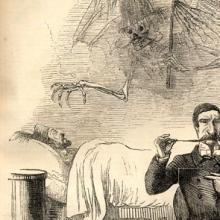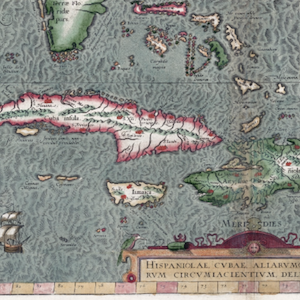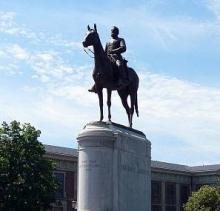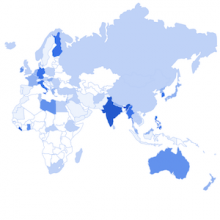Comparative

World War I Posters
This collection is useful in a variety of ways—to study history, to study art and graphic design, and even to study pop culture.
ORBIS: The Stanford Geospatial Network Model of the Roman World
This is a useful tool for educators to model how the Roman empire operated, as well as what those operations may have looked like in practice.
Newspaper report on Eva Peron's Death
Although newspapers are a popular way to locate facts related to a specific event, because they attempt to cover events as they unfold or before they even have all the relevant information, newspapers often include factual errors and always reflect a point of view.

The People’s Map of Global China
This website maps the international activities of Chinese businesses or government affairs, to create an idea of “Global China.”
London Newspaper
This source represents both the power and importance of context when reading local sources and how the speed of information has changed drastically over time.

Short Teaching Module: Sick Men in Mid-Nineteenth-Century International Relations
I use political cartoons, newspaper stories, and excerpts from government documents to show different perspectives of a country’s power and foreign relations. I have several aims in using the texts.
New York Times editorial on Mexico, November 21, 1855
The New York Times was founded in 1851. It was an antislavery newspaper before the Civil War, helping to establish the Republican Party in 1854. It covered international as well as national and local affairs. Historians regard the Times as a gauge of American opinion at the time.

Digital Library of the Caribbean
Educators, students, and scholars interested in understanding the strategic conflicts between European powers, the experience of Africans during the transatlantic slave trade, the emergence of the modern capitalist system, and the rise of neoliberalism would find in dLOC a wealth of content to draw
Short Teaching Module: Controversial Historical Monuments
I use images of three historical statues that triggered controversy beginning in the 2010s to teach about the concept of contested historical memory and to have students consider parallels and differences among public history controversies in different parts of the world.

Primer: Comparative History
Comparison is used in many different ways in world history, both implicitly and explicitly.